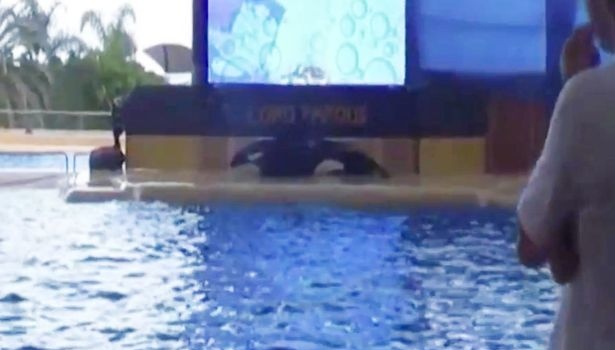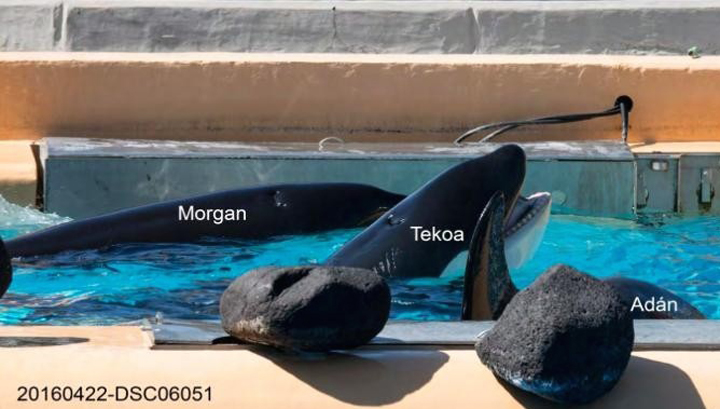
How many times do we need to see captive animals distressed before they are released? It’s not entertaining or amusing, so why are they still being tortured into jumping through hoops and performing on demand? No matter how you label it, suicide or beaching, the bottom line is this: Morgan, one of SeaWorld’s orcas, is in deep distress. So much so that she would risk dying rather than being held in captivity.

Suicide or a cry for help?
Recently, a video has emerged showing Morgan beaching herself on the side of her tank. After pulling herself out of the water, she can be seen lying on the concrete. She reportedly laid there for over 10 minutes.
No matter what the explanation is, it’s not normal for orcas to remain out of the water for several minutes. Although some wild orcas occasionally beach themselves temporarily while hunting, they are otherwise constantly in motion and even swim during sleep. Remaining on land poses incredible health threats, such as internal organs and other body structures being crushed.
When beached, the protein myoglobin is released from the whale’s muscles into the blood and reaches the kidneys, where it is highly toxic. Eventually they become dehydrated and experience kidney damage, which leads to death according to New Science.
Loro Parque disagrees
According to a report in the National Geographic, Morgan wasn’t trying to commit suicide as some are speculating, but instead trying to escape other orcas from bullying her in the tank. The press release from Loro Parque, where Morgan is captive, states that the whales are trained to jump onto the ledge for various reasons like check-ups, and sometimes they spontaneously do the jumps they were trained to do for fun.
“To speculate that this represents a sign of stress demonstrates utter ignorance about the natural behavior of this species,” they state in their blog post.

Strange and dangerous behavior
But in truth, strange and even dangerous behavior is nothing new for SeaWorld’s orcas. They’ve been spotted floating for hours on end, according to the Dodo. They’ve also been spotted “pacing” their tanks, smashing their teeth off on tank walls and seriously injuring each other.
Back in April of this year, video was taken of Morgan in panic, banging her head repeatedly into a metal grate.
So, no matter what excuse is given by Loro Parque or SeaWorld, nothing justifies the alarming and heartbreaking behavior displayed by Morgan — except of course that her life in captivity hasn’t been easy. In addition to the normal stress of captivity, Morgan has reportedly been targeted by the other orcas and is regularly bullied. It’s time to set her free.
— Katherine Marko

